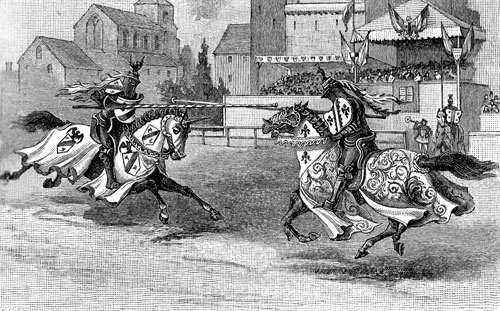5th edition Dungeons & Dragons Combat Critical Fumble Rules
I like critical fumbles in my D&D game. They increase randomness, speed up combat, and create tension and chaos on the battlefield. For me it’s a significant part of the fun of the game, so I use a critical fumble rule for combat when I’m the Dungeon Master or Referee.
So here’s my house rule: when someone rolls a 1 on an attack roll, they have to roll a d20 again to see how bad the fumble is:
20 – Recovery – the fumble has no major ill effect (feel free to make up some comical reason why)
16-19 – Over-swing – disadvantage on fumbler’s next attack roll
12-15 – Miss-step – advantage on the next attack against fumbler
9-12 – Fall Down – fumbler falls prone
5-8 – Drop Weapon – fumbler drops weapon, or else is dazed next round
4-2 – Wild Swing – attack self or ally (attacking player makes new attack roll)
1 – The Gods Frown – attack self or ally with advantage (attacking player makes new attack rolls), or something equally disastrous
The basic idea is, if you roll a 1, something bad happens. Not only have you failed, but your situation has gotten worse somehow.

I used to use a different simple critical fumble table, where the results were basically a d4, and the lower you rolled the worse it was. I like it because it’s easy to memorize and use without having to refer to a table.
The above table is expanded to use the full numerical granularity of a d20. It also uses the “rolling 20 is good, rolling 1 is bad” game design element.
D4 Fumble Table
4 – off balance – enemies have advantage to attack you next round
3 – fall down – fall prone
2 – drop weapon – drop weapon or are dazed next round
1 – bad swing – attack self or ally
There have been a lot of critical fumble rules published, but recently I’ve seen a fun idea about how to handle fumbles. On the Moisture Farmer’s podcast, I heard them using a new-to-me critical fumble rule. Not only is it great for it’s simplicity, but also for the opportunity to be creative.
If a player rolls a 1, the GameMaster decides what happens to the player’s character. When a GameMaster rolls a 1, the players decide what happens to the GameMaster’s character. So when the GM fumbles, the players get to narrate what happens. When a player fumbles, the GM gets to narrate it.
No boundaries are needed, but as a DM, I’d probably usually limit to to, at worst, damaging your own character or an ally. If the players always end up demanding the the monsters fall on their swords and die, then it would be reasonable for the DM to decide the same thing happened to the PCs. So there’s an opportunity to do some creative role-playing and cooperate to keep things “in bounds”.
Do you use critical fumbles in your game? Why or why not? Let us know in the comments below.
Posted in 5th edition Dungeons & Dragons, d20 Future, D20 Modern, Gamma World, Uncategorized, Variant Rules and tagged critical fumble by Adam A. Thompson with no comments yet.
Leave a Reply